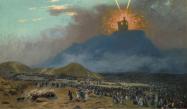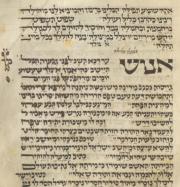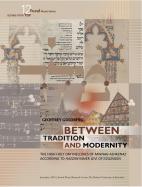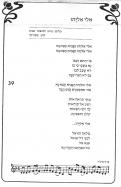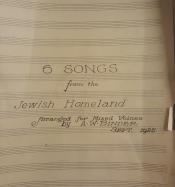(75 results found)
The Fall of Jerusalem in Song: The Ashkenazi Melody She’eh ne’esar
… to be sung by the congregation. To make the scheme even more sophisticated, the poet divided each line into three … was adapted for widespread use in Hebrew poetry. Yet, in more than one section there is a “shortage” of short … designed and published by folklorist and educator Yom Tov Levinsky (1899-1973). The audience for these booklets was …
Nuestro Señor Eloheinu/Las tablas de la Ley: A Song for Shavuot
… the celebration of receiving the Torah on Shavuot. Furthermore, there is significant evidence to affirm that in the … verse in both versions concludes with the word, “Anoji.” Moreover, the opening line, “Moshe ‘alah la’shamayyim,” is …
Moshe Attias
… and Yaakov Zerad, as well as Mwijo’s brothers, Mordecai and Levi. M'alim Ben Haroush would eventually also settle in … the way the State of Israel treated Moroccan Jews (see more below), he remained a local patriot. A preliminary, … marked the limits of his potential audience. What is even more remarkable is that the Moroccan audience in Israel …
Niggun ‘Akedah: A Traditional Melody Concerning the Binding of Isaac
… in both oral and written forms (Spiegel 1967, 13–16; Moreen 2000, 218–222; Guez-Avigal 2009, 159–166; Kartun-Blum … from misfortunes such as sickness and untimely death, and more concretely from an ongoing plague epidemic which took … concerning the melody's antiquity. In 1963 musicologist Leo Levi dedicated a short article to surveying chants used for …
Between Tradition and Modernity
… Days Melodies of Minhag Ashkenaz According to Ḥazzan Maier Levi of Esslingen is volume 12 of the JMRC's Yuval Music … by Dr. Geoffrey Goldberg. An extensive study on Maier Levi and his times as well as of the entire Southern German … of the oral tradition of Ashkenazic ḥazzanut. More specifically, this compendium, even though not complete …
Bernardo Feuer
… whom he studied while working as a painter. He continued more advanced studies in hazzanut with L. Herer. In 1930, … countries, and was involved with various radio and television programs, all in Buenos Aires. Between 1960 and …
“Eli Eliyahu:” The Havdalah Piyyut and its Melodies
… from Salonica. It is substantially different from the more common Ottoman/Iraqi version that we analyzed above, as … of the melody remains above the tonic (in this case D). Moreover, the second degree (E) is lowered (flat) shifting … Tzlil Ha-rag. [16] [1] Abraham Ibn Ezra, Shirim. Ed. Israel Levin. Tel Aviv: Tel Aviv University, 2011, 29-35. [2] …
Four Melodies for Four Questions
… As modernity made its inroads into Jewish homes, more metric tunes (such as Hassidic melodies) took over … Already in the late Middle Ages Rabbi Jacob ben Moses ha-Levi Moellin (1360?–1427; referred to as Maharil) wrote that … of additional passing tones, 2, 7flat and 7 that hints to a more Eastern European character. Baer Ma Nishtana, 1877 …
Na’aleh L’artzeinu – A Simple Melody with an Intricate Story
… sixteenth notes followed by an eighth note followed by two more sixteenth notes. In no other song from the book does … melody, perhaps one sung without text as a dance niggun – more about this later. The text of the song is as follows: … who were already actually in Palestine. Perhaps even more curious than the diaspora focused text is Binder’s …
Haynt Iz Purim, Brider
… in Hebrew also in America already in 1925, as we have seen. Moreover, the melody appears, without text, under the title … was written with contributions by Gila Flam, Neil W. Levin. Michael Lukin and Edwin Seroussi. See part II of our …

